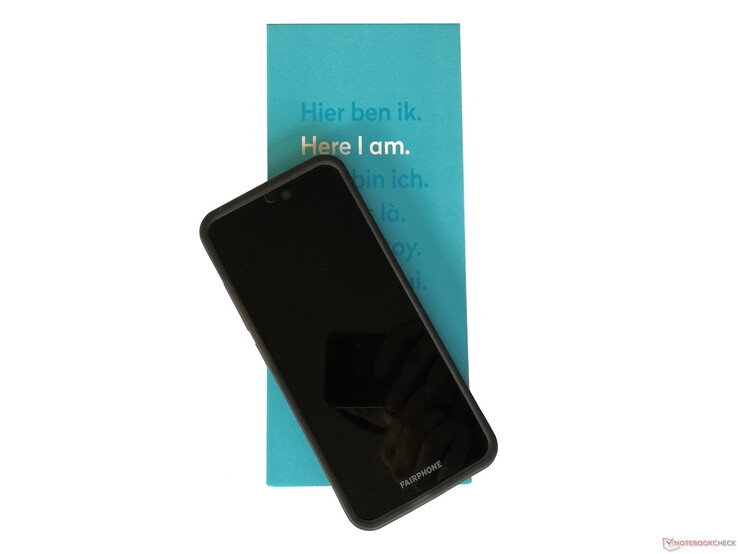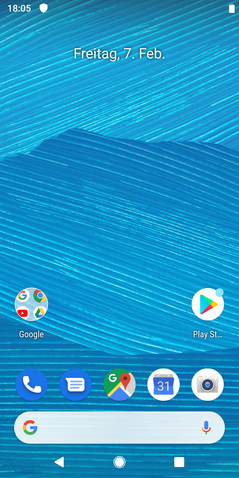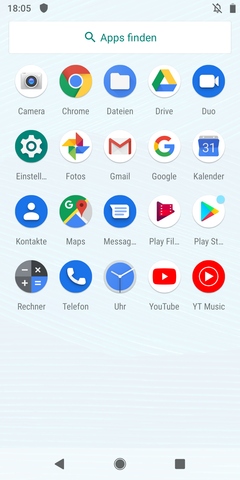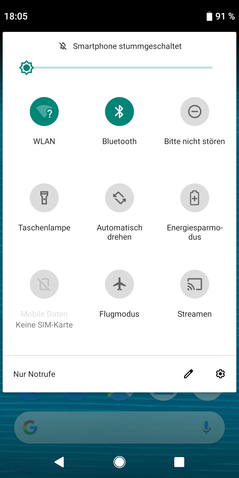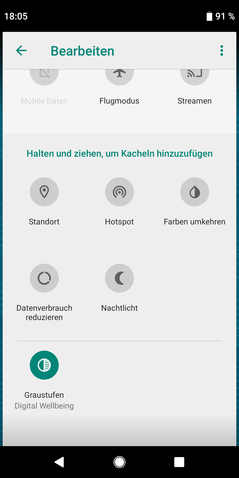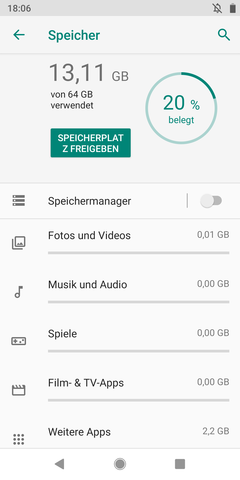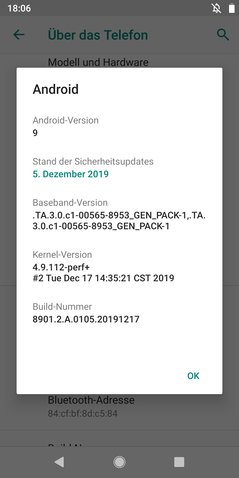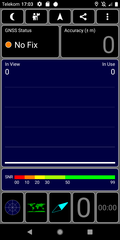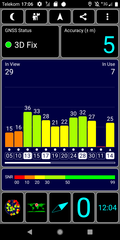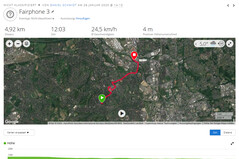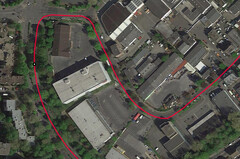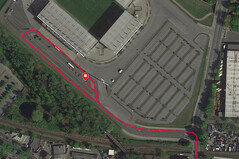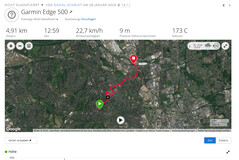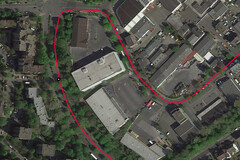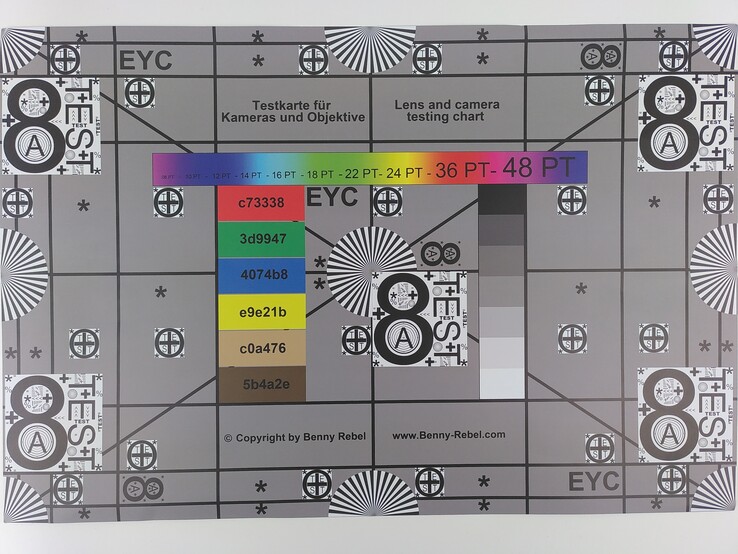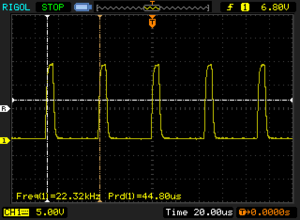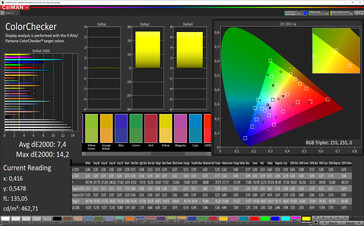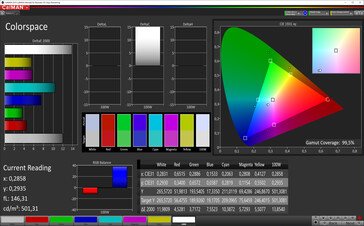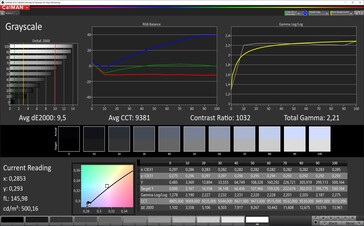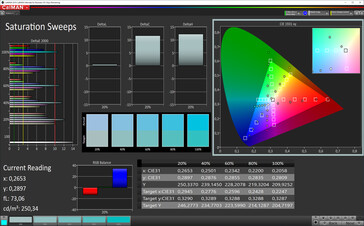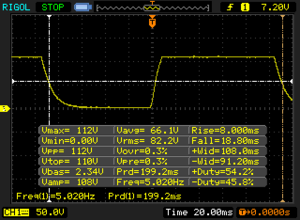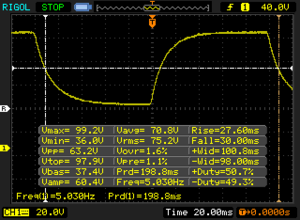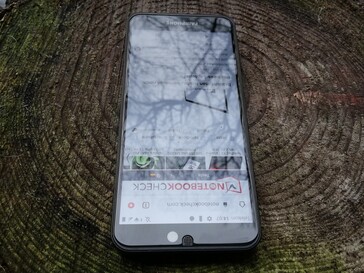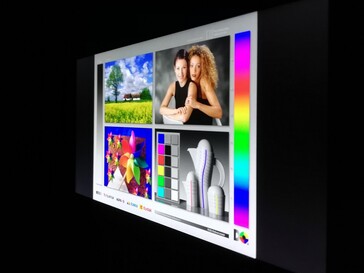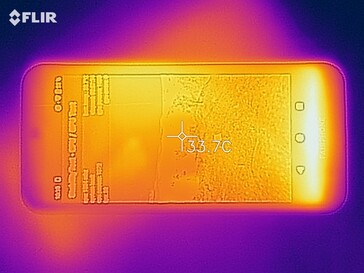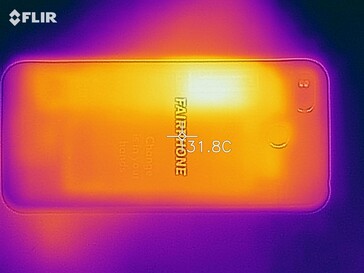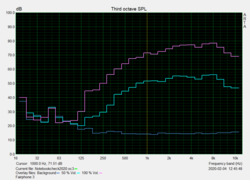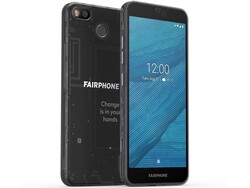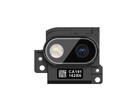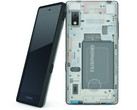Fairphone 3 Smartphone in Review: All Around Improvement
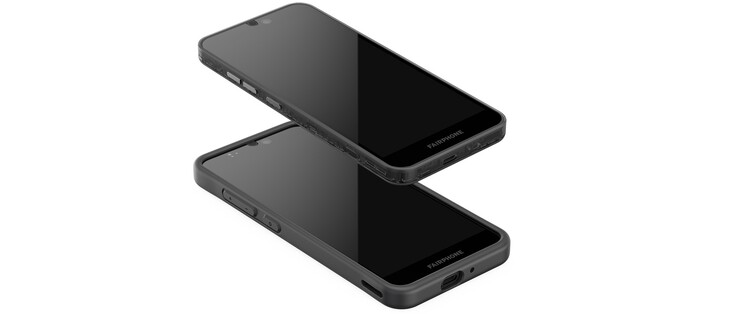
The current third generation sustainable smartphone has certainly been improved over its Fairphone 2 predecessor. The most notable improvements we see are in design and cameras. Its internal hardware, bumped to a Qualcomms Snapdragon 632, an Adreno 505, 4 GB of RAM, and 64 GB of internal storage, hint at lower mid-range performance levels. Comparatively equipped smartphones can be purchased for much less, and at 450 Euros ($500) you can get a lot more. The big plus for the Fairphone is its supply chain, which can now rely almost exclusively on fairly traded resources.
Reference Devices
Rating | Date | Model | Weight | Drive | Size | Resolution | Price |
|---|---|---|---|---|---|---|---|
| 76.5 % v7 (old) | 02 / 2020 | Fairphone 3 SD 632, Adreno 506 | 189 g | 5.65" | 2160x1080 | ||
| 79.2 % v7 (old) | 02 / 2019 | Motorola Moto G7 Power SD 632, Adreno 506 | 193 g | 64 GB eMMC Flash | 6.20" | 1570x720 | |
| 82.1 % v7 (old) | 02 / 2020 | Samsung Galaxy A71 SD 730, Adreno 618 | 179 g | 128 GB UFS 2.0 Flash | 6.70" | 2400x1080 | |
| 83.3 % v7 (old) | 12 / 2019 | Xiaomi Mi Note 10 SD 730G, Adreno 618 | 208 g | 128 GB UFS 2.0 Flash | 6.47" | 2340x1080 | |
| 80.6 % v7 (old) | 05 / 2019 | Google Pixel 3a XL SD 670, Adreno 616 | 167 g | 64 GB eMMC Flash | 6.00" | 2160x1080 | |
| 75.5 % v7 (old) | 12 / 2019 | Gigaset GS290 Helio P23 MT6763V, Mali-G71 MP2 | 190 g | 64 GB eMMC Flash | 6.30" | 2340x1080 |
Case – Smartphone with Swappable Battery
The Fairphone 3 case’s primary design language is repairability, and it is made of robust plastic. The rear cover can be removed without requiring tools, and the battery is located underneath. Behind the battery we find two NanoSIM as well as a single microSD card slot. A total of 13 removable Philips screws are located around the battery compartment.
Once undone you can separate the display from the base in order to replace it if necessary. You will also have to remove the display in order to access other internal components, such as the speakers, the microphone, the USB port, the cameras, or the sensors. Prices for these components can be found on the manufacturer’s website. For example, a new display can be had for around 90 Euros ($100), and a new battery will set you back 30 Euros ($33).
Due to its somewhat old-fashioned design the Fairphone 3 is significantly larger than other smartphones with displays smaller than six inches in diameter. Its footprint is not unlike that of the Xiaomi Mi Note 10’s, although the latter features a much larger 6.47-inch display.
Connectivity – Fairphone 3 with Headphone Jack
The internal hardware can be considered to be lower mid-range, and it offers enough performance for everyday tasks and challenges. The Android smartphone is charged via a USB 2.0-connected USB-C port at the bottom and features a 3.5-mm headphone jack. DRM Widevine L1 is not supported, and the Camera2 API supports Level 3.
Software – Sustainable Smartphone with Android 10
At the time of writing the Fairphone 3 shipped with Android Pie and security patches as of December 5, 2019. An additional security update, dated January 5, 2020, was already available for download. The device comes with a promise of at least one major operating system update, which means it is going to receive Android 10 soon.
The installed version if Android is very pure and clean, and it lacks additional third-party software. Installed microSD cards cannot be formatted as internal storage, and can thus not be used for offloading applications.
Communication and GPS – Poor Data Rates
The Fairphone 3 can take two NanoSIM cards simultaneously in order to establish 2G, 3G, or 4G LTE cellular connections. Thanks to support for LTE Cat. 13 it can achieve up to 300 Mbps downstream and up to 150 Mbps upstream. VoLTE is supported, VoWLAN not.
Supported near-field communication protocols include NFC, Bluetooth 5.0, and Wi-Fi 5 with support for 802.11 ac. When connected to our Netgear Nighthawk AX12 reference router it managed to achieve download speeds of up to 275 Mbps but only comparatively slow upload speeds of up to 92.3 Mbps.
| Networking | |
| iperf3 transmit AX12 | |
| Google Pixel 3a XL | |
| Xiaomi Mi Note 10 | |
| Samsung Galaxy A71 | |
| Gigaset GS290 | |
| Fairphone 3 | |
| Motorola Moto G7 Power | |
| iperf3 receive AX12 | |
| Google Pixel 3a XL | |
| Samsung Galaxy A71 | |
| Xiaomi Mi Note 10 | |
| Fairphone 3 | |
| Gigaset GS290 | |
| Motorola Moto G7 Power | |
Supported location services include GPS, GLONASS, and Galileo. According to our GPS test it achieved an outdoor accuracy of up to 5 m (~16.4 feet). Obtaining GPS lock indoors was not possible.
The Android smartphone did very well when compared with our Garmin Edge 500 reference satnav. Its recorded track only differed slightly from the Garmin’s, mostly in and around turns.
Telephony and Call Quality – Good Connections with the Fairphone 3
Fairphone opted for Google’s default telephone application. Phone calls were loud, and voices were clear and well understandable. Ambient noise was filtered out very reliably so that both participants were easy to understand.
Cameras – Fairphone Takes Better Photos Now
The Fairphone 3’s main camera features a 12 MP sensor with an aperture of f/1.8. Its front-facing camera features an 8 MP sensor with an aperture of f/2.0. The latter took decent portraits slightly pale in color. Individual objects were clearly delineated, and we only noticed blurriness when zoomed in. The only setting with direct effects on image quality supported by the camera application is HDR.
The main camera took great panoramas rich in detail with popping colors. When zoomed in we noticed a grainy pattern on uniform-colored surfaces, and the edges were slightly smudgy and blurry. Macro photos were rich in detail and colors. Nevertheless, they, too, showed a noticeable graininess. Poor lighting conditions result in individual objects no longer being distinguishable. A professional mode supports manual adjustment of ISO, focus, white balance, and brightness.
Recorded videos can be preset to 30 seconds, 10 minutes, 30 minutes, or unlimited. Overall quality was comparable to the camera’s photo capabilities. Video image quality was crisp and clear thanks to image stabilization and an active noise reduction feature. Supported video modes include HD 720p (30 fps), FHD 1080p (30 fps), FHD 1080p (120 fps), and 4K UHD (30 fps).
The ColorChecker passport revealed that the Fairphone 3 captured colors darker than they should be. Our test chart was rich in details and clearly recognizable patterns but at the same time noticeably pale in the bottom corners.
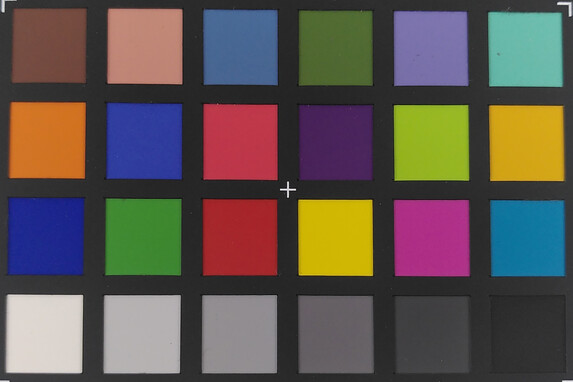

Accessories and Warranty – Power Supply not Included
Included in the box are the smartphone itself, a bumper, and a miniature screwdriver. In order to avoid unnecessary e-waste, the device comes without a power supply and USB cable since most customers will have those already. If not, you can order a USB-C charger with matching USB-C cable separately from Fairphone for 20 Euros ($22) each. A modular headset with detachable ear pieces is also available separately.
By default, the Fairphone 3 ships with 24 months of warranty.
Input Devices & Handling – Decent Fairphone 3 Touchscreen
The Fairphone 3’s touchscreen is very smooth and responsive, and reacted very quickly to input. The preinstalled GBoard keyboard application allowed for fast text input. Extended drag and drop operations caused no issues whatsoever.
At the rear we find a fingerprint reader, albeit its position is too far up for short fingers. Overall, it worked very reliably and virtually instantaneously. Face recognition is not supported.
Display – Run-Of-The-Mill Quality
The 5.65-inch display features an IPS panel with an average maximum brightness of 490 nits and a brightness distribution of 92%. Accordingly, the Fairphone 3 placed in the middle of our test group. It reached a maximum brightness of 505 nits in the APL50 test, and up to 512 nits with enabled ambient light sensor. The lowest supported brightness setting resulted in 19.14 nits.
For brightness levels of 99% and below we found PWM flickering at a very high frequency of 22.32 kHz.
| |||||||||||||||||||||||||
Brightness Distribution: 92 %
Center on Battery: 511 cd/m²
Contrast: 1065:1 (Black: 0.48 cd/m²)
ΔE ColorChecker Calman: 7.4 | ∀{0.5-29.43 Ø4.77}
ΔE Greyscale Calman: 9.5 | ∀{0.09-98 Ø5}
99.5% sRGB (Calman 2D)
Gamma: 2.21
CCT: 9381 K
| Fairphone 3 IPS, 2160x1080, 5.7" | Motorola Moto G7 Power IPS, 1570x720, 6.2" | Gigaset GS290 IPS, 2340x1080, 6.3" | Xiaomi Mi Note 10 AMOLED, 2340x1080, 6.5" | Google Pixel 3a XL OLED, 2160x1080, 6" | Samsung Galaxy A71 AMOLED, 2400x1080, 6.7" | |
|---|---|---|---|---|---|---|
| Screen | 29% | 36% | 32% | 36% | 41% | |
| Brightness middle (cd/m²) | 511 | 608 19% | 465 -9% | 625 22% | 409 -20% | 629 23% |
| Brightness (cd/m²) | 489 | 585 20% | 460 -6% | 607 24% | 410 -16% | 646 32% |
| Brightness Distribution (%) | 92 | 92 0% | 88 -4% | 89 -3% | 96 4% | 95 3% |
| Black Level * (cd/m²) | 0.48 | 0.36 25% | 0.2 58% | |||
| Contrast (:1) | 1065 | 1689 59% | 2325 118% | |||
| Colorchecker dE 2000 * | 7.4 | 5.08 31% | 5.3 28% | 4.38 41% | 1.3 82% | 2.7 64% |
| Colorchecker dE 2000 max. * | 14.2 | 8.74 38% | 7.3 49% | 6.83 52% | 2.3 84% | 6 58% |
| Greyscale dE 2000 * | 9.5 | 5.9 38% | 4.2 56% | 4.1 57% | 1.5 84% | 3 68% |
| Gamma | 2.21 100% | 2.219 99% | 2.09 105% | 2.251 98% | 2.22 99% | 2.1 105% |
| CCT | 9381 69% | 7772 84% | 6558 99% | 7251 90% | 6621 98% | 6340 103% |
* ... smaller is better
Screen Flickering / PWM (Pulse-Width Modulation)
| Screen flickering / PWM detected | 22320 Hz | ≤ 99 % brightness setting | |
The display backlight flickers at 22320 Hz (worst case, e.g., utilizing PWM) Flickering detected at a brightness setting of 99 % and below. There should be no flickering or PWM above this brightness setting. The frequency of 22320 Hz is quite high, so most users sensitive to PWM should not notice any flickering. In comparison: 53 % of all tested devices do not use PWM to dim the display. If PWM was detected, an average of 8084 (minimum: 5 - maximum: 343500) Hz was measured. | |||
A good contrast ratio of 1,065:1 was accompanied by an elevated black level of 0.48 nits, which was only good enough for last place in our test group.
Our CalMAN analysis showed colors with a blue tint which could be somewhat alleviated by activating the night mode. Manual adjustments or color presets are not supported.
Display Response Times
| ↔ Response Time Black to White | ||
|---|---|---|
| 26.8 ms ... rise ↗ and fall ↘ combined | ↗ 8 ms rise | |
| ↘ 18.8 ms fall | ||
| The screen shows relatively slow response rates in our tests and may be too slow for gamers. In comparison, all tested devices range from 0.1 (minimum) to 240 (maximum) ms. » 66 % of all devices are better. This means that the measured response time is worse than the average of all tested devices (20.2 ms). | ||
| ↔ Response Time 50% Grey to 80% Grey | ||
| 57.6 ms ... rise ↗ and fall ↘ combined | ↗ 27.6 ms rise | |
| ↘ 30 ms fall | ||
| The screen shows slow response rates in our tests and will be unsatisfactory for gamers. In comparison, all tested devices range from 0.165 (minimum) to 636 (maximum) ms. » 94 % of all devices are better. This means that the measured response time is worse than the average of all tested devices (31.6 ms). | ||
Performance – Well Suited for Everyday Life
The Fairphone 3 is equipped with a Qualcomm Snapdragon 632, an Adreno 506 GPU, and 4 GB of RAM, and accordingly places in the lower end of current mid-range devices. Nevertheless, it was fast enough for everyday applications. It performed as expected of its hardware in our benchmarks. Similarly priced competitors offer up to 80% more oomph.
| AnTuTu v8 - Total Score (sort by value) | |
| Fairphone 3 | |
| Samsung Galaxy A71 | |
| Xiaomi Mi Note 10 | |
| Google Pixel 3a XL | |
| Gigaset GS290 | |
| Average Qualcomm Snapdragon 632 (n=1) | |
Browsing performance was also reflective of its internal hardware. Websites scrolled smoothly, and media contents loaded quickly.
| JetStream 1.1 - Total Score | |
| Xiaomi Mi Note 10 (Chrome 78) | |
| Samsung Galaxy A71 (Chrome 79.0.3945.136) | |
| Google Pixel 3a XL (Chrome 73) | |
| Fairphone 3 (Chrome 79) | |
| Motorola Moto G7 Power | |
| Average Qualcomm Snapdragon 632 (42.6 - 45.5, n=5) | |
| WebXPRT 3 - Overall | |
| Average of class Smartphone (38 - 380, n=30, last 2 years) | |
| Xiaomi Mi Note 10 (Chrome 78) | |
| Google Pixel 3a XL (Chrome 73) | |
| Samsung Galaxy A71 (Chrome 79.0.3945.136) | |
| Average Qualcomm Snapdragon 632 (50 - 58, n=3) | |
| Fairphone 3 (Chrome 79) | |
| Octane V2 - Total Score | |
| Average of class Smartphone (2228 - 126661, n=194, last 2 years) | |
| Xiaomi Mi Note 10 (Chrome 78) | |
| Samsung Galaxy A71 (Chrome 79.0.3945.136) | |
| Google Pixel 3a XL (Chrome 73) | |
| Motorola Moto G7 Power | |
| Average Qualcomm Snapdragon 632 (8185 - 8420, n=6) | |
| Fairphone 3 (Chrome 79) | |
| Mozilla Kraken 1.1 - Total | |
| Fairphone 3 (Chrome 79) | |
| Average Qualcomm Snapdragon 632 (4806 - 5037, n=5) | |
| Samsung Galaxy A71 (Chrome 79.0.3945.136) | |
| Google Pixel 3a XL (Chrome 73) | |
| Xiaomi Mi Note 10 (Chrome 78) | |
| Average of class Smartphone (257 - 28190, n=154, last 2 years) | |
* ... smaller is better
A total of 64 GB of eMMC flash storage is available, but it turned out to be very slow in both reading and writing. In return, the internal card reader performed on a par with its competitors when benchmarked with our Toshiba Exceria Pro M501 reference card.
| Fairphone 3 | Motorola Moto G7 Power | Samsung Galaxy A71 | Xiaomi Mi Note 10 | Google Pixel 3a XL | Gigaset GS290 | Global Average -3 | Average of class Smartphone | ||
|---|---|---|---|---|---|---|---|---|---|
| AndroBench 3-5 | 84% | 149% | 250% | 154% | 26% | 233% | 1290% | ||
| Sequential Read 256KB (MB/s) | 132.9 | 292.4 120% | 493 271% | 480.5 262% | 315.6 137% | 274.2 106% | 777 ? 485% | 2235 ? 1582% | |
| Sequential Write 256KB (MB/s) | 130.1 | 215.2 65% | 192.4 48% | 243.6 87% | 179.1 38% | 196.8 51% | 502 ? 286% | 1871 ? 1338% | |
| Random Read 4KB (MB/s) | 71.3 | 67.5 -5% | 112.3 58% | 106.2 49% | 92.1 29% | 54.7 -23% | 123.3 ? 73% | 297 ? 317% | |
| Random Write 4KB (MB/s) | 16.96 | 72 325% | 109.6 546% | 118.9 601% | 87 413% | 19.77 17% | 117.3 ? 592% | 343 ? 1922% | |
| Sequential Read 256KB SDCard (MB/s) | 87.1 ? | 86.7 ? 0% | 73.4 ? -16% | 81.1 ? -7% | 69.8 ? -20% | ||||
| Sequential Write 256KB SDCard (MB/s) | 65.8 ? | 65.4 ? -1% | 57.2 ? -13% | 73.9 ? 12% | 51.7 ? -21% |
Gaming – Capable Enough on Medium Settings
The Fairphone 3 offers enough performance to run most current games smoothly on medium settings. More demanding games, such as Asphalt 9: Legends, will require low settings in order to run adequately smooth. Touchscreen controls worked reliably, and so did the gyroscope.
Emissions – Decent Speakers in the Fairphone 3
Temperature
With a maximum surface temperature of just 39.5 °C (103.1 °F) under load the Fairphone 3 remained comparatively cool. While performing our tests we found no problems that could have originated in high temperatures.
(+) The maximum temperature on the upper side is 37.3 °C / 99 F, compared to the average of 35.2 °C / 95 F, ranging from 21.9 to 247 °C for the class Smartphone.
(+) The bottom heats up to a maximum of 39.5 °C / 103 F, compared to the average of 34 °C / 93 F
(+) In idle usage, the average temperature for the upper side is 30.9 °C / 88 F, compared to the device average of 32.9 °C / 91 F.
Speakers
Fairphone 3 audio analysis
(+) | speakers can play relatively loud (87 dB)
Bass 100 - 315 Hz
(-) | nearly no bass - on average 28.9% lower than median
(±) | linearity of bass is average (9.9% delta to prev. frequency)
Mids 400 - 2000 Hz
(+) | balanced mids - only 3.6% away from median
(+) | mids are linear (4.4% delta to prev. frequency)
Highs 2 - 16 kHz
(±) | higher highs - on average 6.2% higher than median
(+) | highs are linear (2.6% delta to prev. frequency)
Overall 100 - 16.000 Hz
(±) | linearity of overall sound is average (19.1% difference to median)
Compared to same class
» 24% of all tested devices in this class were better, 9% similar, 67% worse
» The best had a delta of 11%, average was 35%, worst was 134%
Compared to all devices tested
» 45% of all tested devices were better, 7% similar, 48% worse
» The best had a delta of 4%, average was 24%, worst was 134%
Gigaset GS290 audio analysis
(+) | speakers can play relatively loud (86.3 dB)
Bass 100 - 315 Hz
(-) | nearly no bass - on average 33.1% lower than median
(±) | linearity of bass is average (9.2% delta to prev. frequency)
Mids 400 - 2000 Hz
(±) | higher mids - on average 9.6% higher than median
(±) | linearity of mids is average (10.3% delta to prev. frequency)
Highs 2 - 16 kHz
(±) | higher highs - on average 7.3% higher than median
(±) | linearity of highs is average (7.1% delta to prev. frequency)
Overall 100 - 16.000 Hz
(-) | overall sound is not linear (30.2% difference to median)
Compared to same class
» 78% of all tested devices in this class were better, 4% similar, 18% worse
» The best had a delta of 11%, average was 35%, worst was 134%
Compared to all devices tested
» 88% of all tested devices were better, 3% similar, 9% worse
» The best had a delta of 4%, average was 24%, worst was 134%
Battery Life – Small Battery, Decent Performance
Power Consumption
Overall power consumption was comparable to other devices in its class. That said, the Fairphone 3 was particularly efficient when idle.
| Off / Standby | |
| Idle | |
| Load |
|
Key:
min: | |
| Fairphone 3 3000 mAh | Motorola Moto G7 Power 5000 mAh | Samsung Galaxy A71 4500 mAh | Xiaomi Mi Note 10 5260 mAh | Google Pixel 3a XL 3700 mAh | Gigaset GS290 4700 mAh | Average Qualcomm Snapdragon 632 | Average of class Smartphone | |
|---|---|---|---|---|---|---|---|---|
| Power Consumption | -44% | -4% | -22% | 4% | -26% | -28% | -36% | |
| Idle Minimum * (Watt) | 0.42 | 1.1 -162% | 0.63 -50% | 0.7 -67% | 0.7 -67% | 0.88 -110% | 0.924 ? -120% | 0.847 ? -102% |
| Idle Average * (Watt) | 1.64 | 1.9 -16% | 1.49 9% | 1.8 -10% | 1.63 1% | 2.05 -25% | 1.748 ? -7% | 1.448 ? 12% |
| Idle Maximum * (Watt) | 1.69 | 2.8 -66% | 1.51 11% | 2.2 -30% | 1.67 1% | 2.1 -24% | 2.36 ? -40% | 1.633 ? 3% |
| Load Average * (Watt) | 5.19 | 4.1 21% | 4.62 11% | 5.2 -0% | 2.64 49% | 4.73 9% | 4.18 ? 19% | 6.96 ? -34% |
| Load Maximum * (Watt) | 7.2 | 6.9 4% | 7.11 1% | 7.5 -4% | 4.62 36% | 5.61 22% | 6.6 ? 8% | 11.3 ? -57% |
* ... smaller is better
Battery Life
The Fairphone 3 managed a runtime of 11 hours in our real-world Wi-Fi test, and made good use of its 3,000 mAh battery. Please note that some competitors come with significantly larger batteries.
Using a two-year-old Quick Charge power supply made by Huawei rated at 18 W the battery took a whopping 5 hours to charge. According to the manufacturer the Fairphone 3 should support Quick Charge 3.0 with up to 15 W.
| Fairphone 3 3000 mAh | Motorola Moto G7 Power 5000 mAh | Samsung Galaxy A71 4500 mAh | Xiaomi Mi Note 10 5260 mAh | Google Pixel 3a XL 3700 mAh | Gigaset GS290 4700 mAh | |
|---|---|---|---|---|---|---|
| Battery runtime | ||||||
| WiFi v1.3 (h) | 11 | 35.7 225% | 13.6 24% | 18.8 71% | 11.8 7% | 15.6 42% |
Pros
Cons
Verdict – Sustainability at a Price
The Fairphone 3 is a straightforward continuation of the sustainable and modular smartphone design. The modules are smaller, build quality has been improved, and the hardware is more than fast enough for everyday tasks. Furthermore, camera performance has been improved significantly, and users can now expect a good-looking well-made high-quality smartphone.
Apart from its high purchase price the Fairphone 3 has no shortcomings when compared to other manufacturers’ smartphones.
The decision for the Fairphone 3 will be a very conscious one. Its price is much higher than that of other similarly equipped competing smartphones, and its intended lifetime should substantially exceed two years. Otherwise, the replaceable modules might not make any difference whatsoever. And while the Fairphone 3 cannot keep up with the other manufacturers’ arms race, it is definitely worthy of support if its hardware fits your bill.
Note: the case was rated higher due to its great repairability.
Fairphone 3
- 02/25/2020 v7 (old)
Mike Wobker




